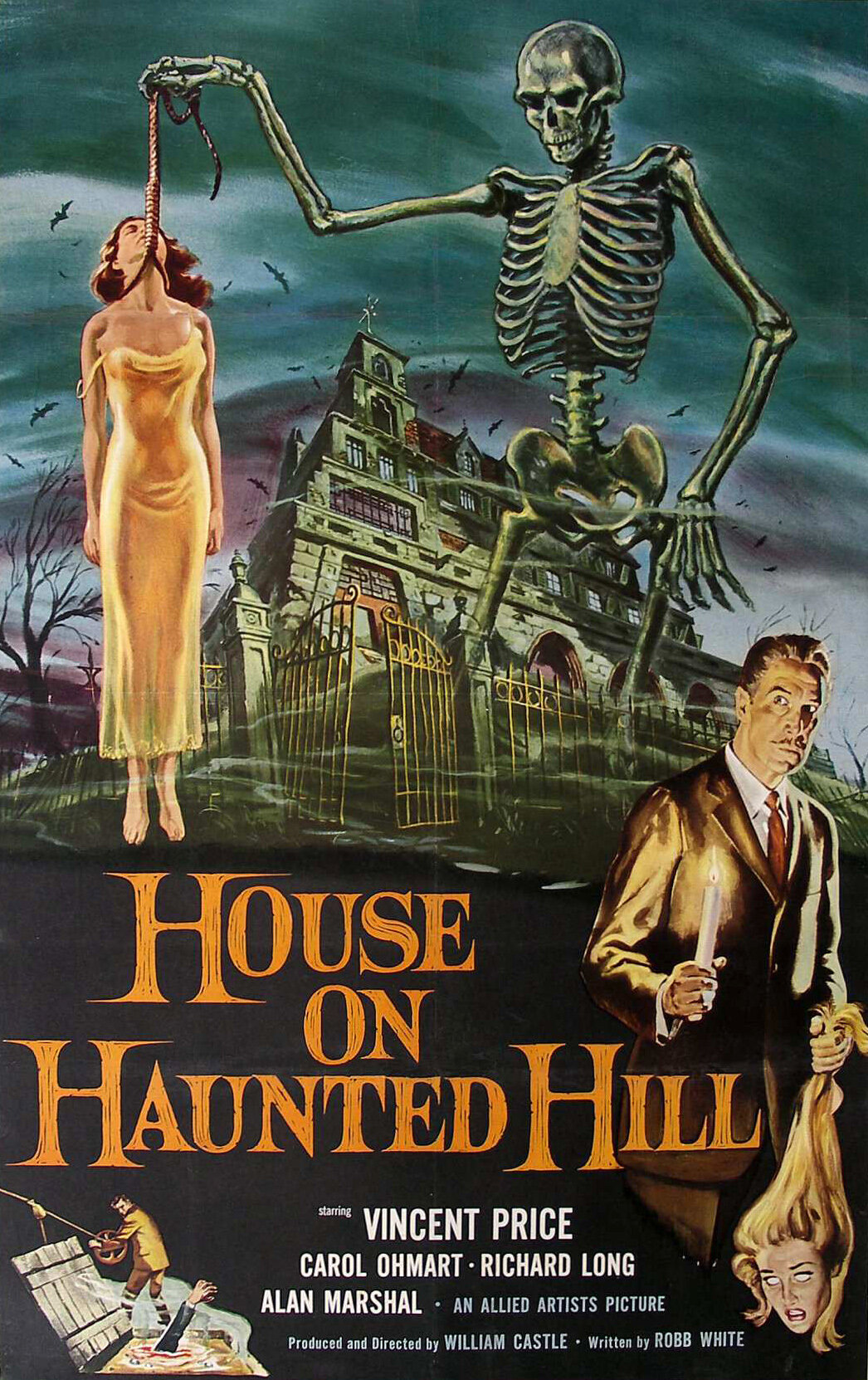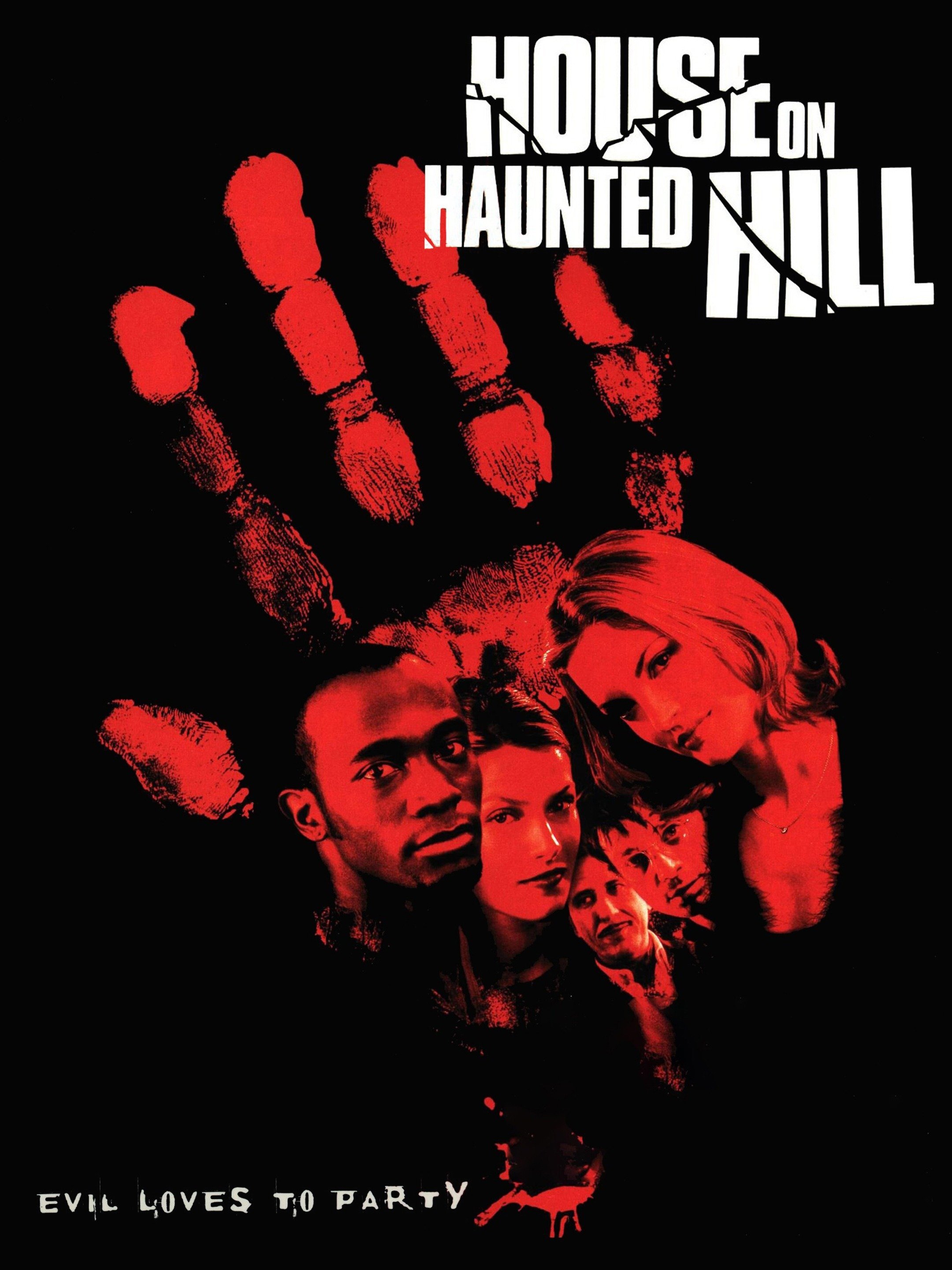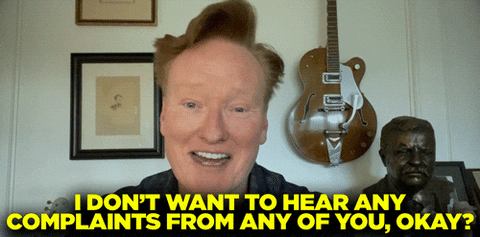WHATS OLD IS NEW AGAIN (and sometimes again) (and maybe again)
I thought it might be time to do the old compare/contrast review for one of my favorite Vincent Price films and it’s remake. Most of the time, I already have a bias in favor of an OG film (and usually, it’s justified). I couldn’t remember a whole lot about the remake on this one, except to say that I thought I enjoyed it somewhat, but it was just okay.
Happy to say, I was partly wrong.
But let’s kick things off with the original 1959 House on Haunted Hill.
(SPOILER ALERT: As both these films are at least 20 years old, I will be giving away plot points and story reveals through the review. Get over it.)
Quick synopsis for the uninitiated: A millionaire invites five people to a haunted house for a party he’s throwing for his wife. They all must spend the night in the house and if they survive, each person gets $10,000 (that would be around $90K in today’s money). As you might guess, the ghosts in the house have other ideas and put all the guests through terror before the night is over. Do any of them survive?
All right, let’s get down to the nitty gritty. Directed by William Castle, this film came out in 1959, so you may be wondering why it’s in black and white. Color movies were available at the time, so I can only guess it was either an artistic choice or a budgetary one. Either way, I prefer it in its original black/white, as opposed to the colorized version that came out in 2005.
(I think any black and white film that gets the colorized treatment looks terrible and it weakens the original film)
The films starts right off with narration from one of the characters, Pritchard, but his image is on the screen and talking directly to the viewer. He gives us a vague dark history lesson on the house. Then the host of the party, Frederick Loren, pops up and gives us some more narration, sounding like he’s reading the invitation he sent out before introducing all the guests as they make their way to the house. We’ve got Lance, the ex-pilot; Nora, a secretary supporting her whole family; Ruth, a local paper columnist with a large gambling debt; Dr. Trent studying hysteria brought on by fear; and Pritchard, the only remaining member of the family who owns the home.
All of this happens before the credits even begin!
Once we get through all that, then we can watch this like any other film. We are not involved anymore, but we have been primed and prepped.
The characters are all well developed. Besides the interesting info dump with the narration, we get to know the characters as the story progresses, though I do feel the columnist, Ruth, is left wanting for a bit more meat to her story. But I think they make up for it by making her a target of the dripping blood that moves around the house.
I think the most development comes with Frederick and his wife, Annabelle. It’s obvious they absolutely abhor each other; they’ve tried to kill each other before; she only married him for his money and he knows she’s sleeps around. I love how the animosity between them is very underplayed, though. They don’t call each other names or cuss each other out, and they certainly don’t act unbecoming in front of the guests. It’s a good tension builder and the tiny snippets the others see make them come to all the wrong conclusions.
The exterior shots of the house are of the Ennis House in California, built by Frank Lloyd Right. Very modern, lots of cube shapes, etc. Sound stages were used for the interior shots, with different styles mixed throughout the ‘home’. It’s a little off putting, as you don’t expect to see the Victorian style gas lamps, dark wood, and thick carpeting. So we’re already off-kilter right from the start. I’m also guessing the acid pit in the cellar was not a normal part of 1920’s architecture or home conveniences.
(Personally, it’s my favorite part)
The music fits perfectly into a 1959 horror film. At times dramatic, a sweeping orchestral score, hints of minor chords or dissonance that enhance each scene. It never detracts or does any disservice to the overall feel and mood of the whole movie.
As the movie progresses, Pritchard, whose own brother was murdered in the house, keeps insisting on how the ghosts who live here are mad and will attack anyone they can. More than likely, someone will end up dead and joining the gaggle of spirits before the night is over. Aside from the blood dripping, everything else that happens in the house can be explained – once you get to the big twist, that is. Up until that point, though, it does seem like the house is haunted. Nora receives the brunt of the torment, though, so by the 3rd act, she’s absolutely hysterical with terror.
And that brings me to the twist. You see, one of the guests, Doctor Trent, is having an affair with Annabelle. They agreed to this little party so they could set someone up to shoot Frederick. She wouldn’t get arrested, no one would be any wiser, and she’d get all his money. And with Nora completely hysterical, and running around with a gun to protect herself, it’s only a matter of time.
Oh, Nora shoots him all right, after Annabelle fakes her own death which solidifies everyone’s beliefs that Frederick killed her. Trouble is, Frederick already knew what those scheming nasties were up to and turns the table on them both, using the convenient vat of acid to achieve his revenge. It’s a double twist! In fact, I think my favorite line comes from Frederick after he gets rids of Annabelle. “It’s a pity you didn’t know when you started your game of murder that I was playing, too.”
When I saw this as a kid, this twist and big reveal were quite a shock to me. I loved it. It may seem cliché or an overused trope today (and it can be) but if you rewatch the film, knowing what’s going down, you will see Annabelle and David dropping hints to their plan, how they’re gauging each guest’s fear level, planting seeds to create alibis or allies. It’s all done with subtlety and double meanings, and if you’re not paying attention, you could miss it.
I do love the ending. While the David and Annabelle get their just desserts, it’s obvious Frederick murdered them, or set them up to ‘have accidents’ in the acid pit. But he turns himself in, or at least tells everyone he’ll let the authorities decide if he’s guilty. It’s almost like Frederick Loren is Lawful Evil, you know?
There are a few things that irk me about this film, though.
While Pritchard is going on and on about all the ghosts, he pulls a butcher knife from a hidden compartment in one of the sofa arms in the drawing room. It was used to kill his brother. WHY IS IT STILL IN THE COUCH, THOUGH??
The acid vat in the cellar was used to get rid of some victims. And it’s still full of acid. WHY THOUGH?
After Annabelle’s “death”, the guests convene in the drawing room to discuss what the hell is going on. But the doctor doesn’t bother Nora (she’s already hysterical at this point) because it doesn’t concern her. WHY THOUGH? She’s in the house, right? Annabelle is dead either by ghosts or one of the other guests so IT CERTAINLY FUCKING CONCERNS NORA.
Once Nora has reached the peak of hysteria, she grabs a gun and heads for the cellar. WHY THOUGH? She just saw Dead Annabelle outside her window. Shouldn’t she seek safety with Lance at least, since they’ve been kinda lovey dovey from the start?
The tricks David and Annabelle play on Nora don’t really add up. There seem to be too many of them, happening too quickly at opposite ends of the house, to be plausible. However, maybe some of them, as well as the dripping blood, are the result of supernatural beings inhabiting the house…The whole ghost idea is hammered on again and again with very little evidence, just Pritchard’s word. And I kind of like that it’s very vague and open to interpretation.
This is one of my favorite films from the fifties, and definitely in my top five with Vincent Price as the star. Despite its few faults, I will always adore it and it’s a go to film when I need a little nostalgic comfort.
And now, let’s get a good look at the remake from 1999, directed by William Malone.
The basic story is the same – millionaire invites an assortment of people desperate for money to spend the night in a haunted house. He and his wife hate each other, and she wants him dead so she can get all his money. She and her lover plan the same hijinks as the OG – get someone so scared and convinced her husband is a killer that they, in turn, will kill him.
That is about the only similarity to the original film. This remake takes things to a much crazier, much creepier level. So much so that it almost feels like a completely NEW film with a haze of familiarity to the original.
Instead of opening with narration, we get a flashback. Dr. Vannacutt, the head doctor at the Vannacutt Asylum, is performing a medical experiment on a live patient, while one nurse assists and one films the whole procedure. Unbeknownst to them, all the patients have broken out of their rooms and taken over the asylum, killing everyone, including the two nurses and Vannacutt, in the most brutal fashions. But not before Vannacutt trips the emergency lockdown mechanism, which throws down heavy steel doors through which no one can escape. When the asylum catches fire during the riot, all but five people on the staff die.
That flashback is part of a television “true crime” episode Evelyn Price is watching while taking a bubble bath. She is the young wife of the eccentric Stephen Price, amusement park mogul, master of thrills and surprises, and millionaire. She emails him a list for the party; Stephen changes it immediately. Their whole exchange establishes that hate/hate relationship between them.
However, once Price leaves his office, with the party guest list open on his computer, something hacks the system and changes the names of the invitees.
When we finally get the opening credits, and the procession of the invited guests making their way to the house, Marilyn Manson’s cover of The Eurhythmics’ “Sweet Dreams (Are Made of This)” plays. They couldn’t have chosen a better song. Anyone familiar with his style of music can understand what I mean. Raw and creepy.
From the beginning of this movie, the tone is completely different from the original. It’s dark, unsettling, crueler, and atmospheric in the truest sense of the word gothic. The asylum, updated as a house, looms large atop a hill, a monstrosity in the dark. The inside is modern and stark, mostly blacks and whites – at least the main floor is. Once the guests venture into the basement, it’s a little more cliché with it’s rusty water-stained walls, cobwebs, discarded gurneys and clunky outdated machinery from the asylum days. The skinned specimens in display cases at the bottom of the stairs are a nice touch, though.
Generally, the characters are similar, in personalities and circumstances. Eddie’s former ballplayer the counterpart to Lance’s ex-pilot; Sarah is the modern Nora; Melissa is the new form of media journalist, replacing Ruth’s newspaper column. Price does have one of his park employees in a hidden monitoring room, spying on everyone and running a few mechanical tricks and surprises for the guests, but otherwise feels like the original eccentric. Evelyn is a bit more crude, definitely more sociopathic and twisted, but still a little money-grubbing whore.
The one clear difference is Chris Kattan’s Pritchett. Compared to the original Pritchard’s doom-and-gloom character, Pritchett is a high strung, scared as fuck, impatient man who just wants to get his money and get the fuck out of dodge. Yes, he believes the house is haunted and has caused many tragedies over the years. He tries to downplay it a bit at first, but once they are all locked in, he shares more than enough horror stories about the history of the asylum and Dr. Vannicutt’s own madness.
Chris Kattan is an absolute DELIGHT in this film and all of my favorite lines were uttered by him.
One of the big differences in this version is that there is NO DOUBT supernatural forces are at work. Though the characters question everything from minute one, considering Price’s reputation and all, the viewer is given no choice but to believe everything that Pritchett warns the guests about. Obviously Vannicutt’s victims are super pissed, but the true evil, the darkness embodied by the house, is responsible for everything.
The house changed the guest list; the house tripped the security doors; the house has no morals and will kill them all. We eventually learn that everyone invited to the party is related to one of the five surviving staff members of the original asylum. The house doesn’t brook no escapees, people.
And just so you don’t forget that little truth nugget, all but two of the characters die horrible, nasty deaths.
Because of that, we get a lot more practical special effects in this flick. Aside from the skinned specimens in the basement, there is a shit ton of blood, desiccated bodies, a severed head, gut stabbing, electrocution, body with a missing face (like someone took a melon baller to the head), and gun shots. And that’s not even counting the massacre of the opening story about the 1931 asylum riot!
Major creepy factor throughout the entire film. From the sets to the cinematography, the kills and ghosts, the viewer is delighted and disgusted by everything happening. I think that’s what makes this look and feel like a completely different film from the original. It’s more like a distant cousin’s wife’s brother-in-law’s uncle than a carbon copy.
The few issues I had:
Some of the pacing. When they lock Price up in one of the old machines, used to treat schizophrenia, his torment and hallucinations go on far too long. The surreal nature of the treatment procedure loses its hold on the viewer after a couple of minutes. Also everyone constantly running to the basement then back to the living room then back to the basement and back to the living room…tiresome.
I also don’t believe that Sarah can fix the basement power issues by rewiring a rusty, crusty fuse box that hadn’t been updated or touched since 1931. I don’t think that’s how it works. Electricians in the audience? Help me out on this one?
Sarah believes Price is a killer way too soon, and never doubts that conviction. At least in the original, Nora started to think maybe she was overreacting or just unsure of who she saw doing what. Sarah knows nothing about anyone here, so why is she so sure Price is a murderer?
Jump scares. Only a few but still, I hate them. They’re a cheap parlor trick.
The effect used to create “the darkness” of the house looked more like a Rorschach ink blot test than anything otherworldly and dangerous. But I think for the time period and technology available, it was okay.
Not too much nitpicking from me. These issues were minor compared to the rest of the movie. I hadn’t watched this one in years so I’d forgotten a lot of it. And I’m honestly surprised to say I thoroughly enjoyed it. After some research, I’ve found that three major scenes and chunks of footage were cut from the film mostly because of running time constraints. So now I’m going to have to go buy a copy and see what’s its like with all that put back in.
I don’t think either film wins over the other. Both are fantastic examples of two different styles of haunted house stories. I’m going to have to call this one as a tie.














